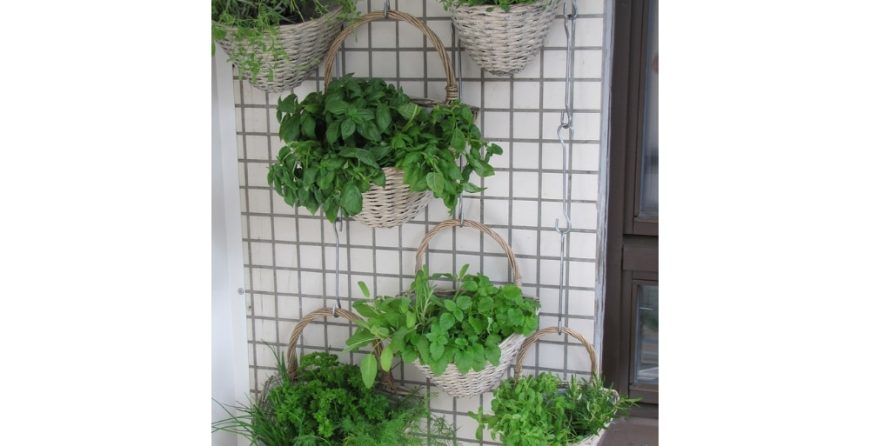Living in the city doesn’t mean you can enjoy gardening. Nowadays, you can become an urban gardener and enjoy fresh produce even with limited space and we are here to show you how easy that can be.
What is vertical gardening?
This is a technique that is now gaining popularity, especially in urban environments, because it allows plants to grow in a vertically suspended panel via hydroponics. This can be done either with the use of a freestanding method or by simply attaching it to wall.
Watch this video to learn more about vertical gardening:
Is vertical gardening easy?
It is absolutely easy. You can even do it with your kids and it is a great way of helping save the environment, too.
Are you ready to begin?
How to start your own vertical garden?
For as long as you have the right materials to create your vertical garden, it won’t matter if you’re a tenant or a homeowner. The following are the ways on how you can start your vertical garden in a cheap way.
1.Get DIY Ideas First
You may get DIY vertical gardening ideas first. You can check magazines or search on the internet for the ideas you would like to make. Whether you opt for a trellis, stand-alone, or a terrarium style of garden you might find with a fellow enthusiast.
If you are to build a strong trellis with wood planks, you might consider the following:
- Plan the exact size of your trellis and the number of tiers you would like to have.
- Use a tape measure to get correct measurements of your wall or fence.
- Hang up the brackets on the fence. Make sure they have equal gaps.
- Screw together wood boards and attach to the planks with nails
- Pour your soil in the trellis and start planting!
If you have a boring backyard, adding vertical planters can enhance its look. Add the following:
- Center rod
- Potting soil with small rocks (for a strong base)
- Perrenials
- Clay pots in different sizes
2.Look Around and Improvise
For sure you have old stuff sitting around the corner. Make the most out of it. Here are some of the things you can re-purpose.
- Shelves and dividers – you can use these in positioning potted plants and herbs
- Gutters – drill holes onto it for water drainage. You can even hang them up if you want to
- Baskets and bottles – you can hang these up. Just make sure that they can carry the soil and plant
- Ladders and staircases – paint these first to restore beauty before using
- Shoe organizers – these can be placed indoors or outdoors. Just make sure they are getting enough sun
3.Choose the Best Plant
Not all plants can thrive with a vertical strategy of gardening. So make sure you choose your plant carefully. Avoid buying expensive herbs and vegetables.
Here are some questions you can ask a garden specialist:
- Can your wall carry the soil and plant’s weight?
- Can the plants be transferred easily if necessary?
- Are the plants adaptable in compact spaces?
- Does the plant need low or high maintenance monitoring?
- Can it survive the climate?
Label these plants with an organic marker to keep it organized.
4.Choose your Soil
Choosing your soil wisely to ensure your plants’ growth. In a vertical garden, rich potting soil is important since there is growth limitation. A weed-free and compost filled soil is recommended. You can perform a soil test before buying a bunch of soils.
You can try a soil first with one or two potted plants to check if it will work well with your plants. Some materials you need may include:
- Organic manure
- Brick pieces
- Potting mix
- Pots
You may also use an organic fertilizer for healthier soil for your plants.
Watering Tip
- For indoor plants – water them at least 3 to 4 times a week or you can wait until the topsoil becomes dry. You can do this alternately if your plants don’t receive a high amount of sunlight.
- For outdoor plants – it will be ideal to water them daily and ensure full sunlight for growth support.
5.Prepare Replacements
Since there are plants that are short-lived and vertically planted plant may die out eventually, make sure you have a readily available replacement. Plant a few kinds in a separate pot so you can immediately replace the dead ones.
Because of weaker roots due to lesser soil, it would be best to plant just a few kinds of plants just in case it reaches its lifeline, you can replace them easily.
Therefore, there is still a chance for your ardent thumbs with plants and soil even at the urban. And it doesn’t need to be expensive at all! Just pay attention to the plants’ basic needs to survive vertical gardening.
Hopefully, the list above can help you with your plans!
Have fun getting your hands dirty!



Love this! There are always ways to get around limited space. Just gotta think outside the box. Or up along the outside of the box.
Glad you enjoyed it. Hope more people gets engaged with gardening.